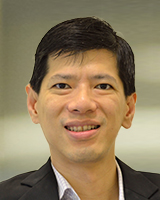The Asian towerco model will evolve to incorporate services such as energy, small cells and backhaul
By Lim Chuan Wei (Partner, Analysys Mason) and Arianna Neri (TowerXchange)
The tower industry was originally conceived as a pure 'steel and grass business', a straightforward telecoms real estate industry, in regions such as Europe, India and North America. However, some innovative tower markets have evolved and towercos have extended their business models to incorporate additional services such as energy, small cells, distributed antenna systems (DAS) and more recently, backhaul. In this article we examine the factors affecting the evolution of the towerco market, with a particular focus on Asia, and make predictions for the future of the towerco model in this region.
Local market conditions affect the level of service that towercos can offer tenants in emerging regions
The dynamics of the tower business model vary depending on the maturity of the local market. It is therefore unclear how far towercos operating in less-developed regions can extend their service propositions. Towercos must establish whether it is worthwhile for them to engage with extra layers of complexity such as energy services, small cells and backhaul.
In India, the tower industry initially passed power costs on to the tenant, but soon started offering shared power systems and services to tenants. However, the complexity and opex-intensive requirements of energy management in the subcontinent meant that towercos soon realised that the optimal solution was to outsource these operations to specialised companies such as energy service companies (ESCOs) and, more recently, renewable energy service companies (RESCOs).
In Africa, American Tower started operating with a full power pass-through model (which it still does in South Africa). However, after finding that its mobile network operator (MNO) tenants expected a deeper service offering and for their towerco partner to own all the power equipment, American Tower now provides DC services in Uganda and is migrating to a DC service level in Ghana.
In Myanmar, the epitome of a telecoms greenfield market, MNOs took different approaches to energy-related services. Telenor opted for an advanced model from day one and required contracted towercos to acquire power equipment, albeit with diesel costs passed through. In contrast, Ooredoo started by acquiring and owning all the necessary power equipment itself, subsequently releasing a request for proposal (RFP) for an ESCO to take on more than 1000 sites. Leap Power was reportedly awarded the contract.
Towercos are well-positioned to offer MNOs solutions to help them extend coverage and capacity
As tower markets and communication technologies evolve, MNOs will seek state-of-the-art solutions to extend coverage and capacity beyond the existing macro network. An increasing number of towercos are supplementing their macro tower portfolios with in-building solutions (IBS), DAS, lamp posts and other sharable 'special structures'.
Heterogeneous networks are evolving in mature environments where the legacy macro network might be insufficient to meet infill demand in dense metropolitan areas. In major cities in Asia and elsewhere, the advent of 4G calls for more-sophisticated, less-conspicuous solutions such as small cells and lamp posts that are different in design but suitable for sharing between at least two tenants, like towers.
Bangkok, Jakarta, Kuala Lumpur, New Delhi and Singapore are the ideal environments for towercos to offer in-building solutions, lamp posts and other special structures. These advanced products are multi-tenant ready and upgradable – and therefore suitable to be shared – and comply with the aesthetic requirements often enforced in urban areas.
Some operators are keen to secure backhaul from towercos, which would bring several benefits
Many operators have expressed a desire to secure co-locations and backhaul from towercos in a 'one-stop shop', which would extend the towerco business model to backhaul. For towercos, this potentially opens up a supplementary revenue stream, but they also stand to benefit from the removal of heavy microwave dishes, releasing wind load capacity, which could then be monetised through the sale of additional tenancies. However, challenges include the significant deployment cost of fibre in rural and remote areas and the alignment of operators' network elements.
By 2020 towercos will develop a diversified portfolio of services to support the modernisation of the telecoms sector
We believe that towercos will start developing diversified portfolios of services that could include energy, special structures and backhaul. A shift towards specialisation might require towercos to eventually outsource to ESCOs, RESCOs and subcontractors focused on small cells as tenants' requirements evolve.
Publicly listed towercos might opt to remain on safe ground and concentrate on their core competencies of building, buying and managing macro towers. This would create a market for specialised infrastructure companies, agile enough to deviate from the established business model by offering a broader inventory of structures and services to MNOs.
We also believe that the evolution of the Southern and Southeast Asian tower industry will involve the creation of highly specialised, multi-service companies that will simply adapt to the new requirements of their clients, enabling the modernisation of the telecoms sector as a whole.
Analysys Mason is a leading advisor in this space. For more information please contact Lim Chuan Wei.
Arianna Neri is the Head of Americas and Asia for TowerXchange, an open community for thought leaders in the emerging market tower industry.
Downloads
Article (PDF)Authors

Lim Chuan Wei
PartnerLatest Publications
Article
High stakes for data-centre investors and operators: GPUaaS specialists offer growth with risk
Article
CFO interview: Netomnia’s Wil Wadsworth on raising finance in a challenging debt environment
Project experience
Providing end-to-end, essential support to a regional digital services company’s first Project Gigabit win

